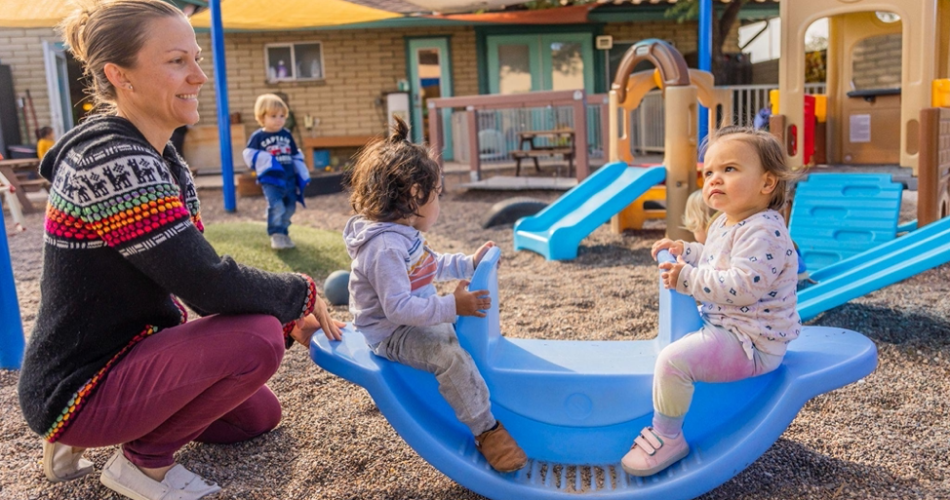We use the VISION model in Quality First to guide the quality improvement journey. This is the fifth in a series about the six stages of the VISION model. If you haven’t already, check out our blogs on vision casting, investigating current practices, setting goals, and implementing action steps.
As you work through the action steps on your quality improvement plan, you’re likely to find some things work out the way you planned, while others don’t. Remember, this is your plan, and you can adjust things along the way to meet your needs. Think of your written plan as a “living document” that you tweak and fine-tune as you go. As you move through your plan, remember the three R’s (no, not those three R’s): review, reflect and revise.
Review
Review the action steps on your written plan regularly. As you finish action steps, mark items complete on the plan, and make notes as you try new things. Discuss your progress on action steps with a colleague, coach, or technical assistance professional to help keep you motivated and on track.
Reflect
As you work through your goal plan, you’ll be trying new things on your own, with a colleague, or with a coach or technical assistance professional. It’s helpful to take time to reflect on how new strategies are going. Which supports from your coach or technical assistance team work well for your learning style? And what strategies or supports aren’t working? If you’re running into obstacles completing action steps, think about what is causing those barriers. Do you need extra help completing a step or need to try a different approach?
Revise
You’re the leader of your quality improvement plan, so you can modify your action steps as needed.
If you’re working with a coach, let them know how their supports work for you and what you want to change. For example, you may have planned for a coach to observe and provide feedback as you try a new teaching strategy or activity. If, after trying it, you still feel unsure about how to put the new strategy into practice, tell your coach. They can offer other ideas for getting comfortable with the new strategy. One option could be for the coach to model the new skill while you observe. Another option could be for the coach to work alongside you while you try it out, offering hints and assistance in the moment.
If you decide to change an action step or approach, make a note on your plan. These notes can keep a record of what works best for you, which will help you in the future when you set your next goal.
Don’t worry if things don’t go according to your original plan. As you adapt and adjust, keep your vision in mind. And remember, every step you take along your improvement journey helps the children in your care and gets you closer to your long-term vision for quality.
At Quality First, we love to hear from you. Share your innovative practices so that others can be inspired. Email us at QualityFirst@FirstThingsFirst.org.
